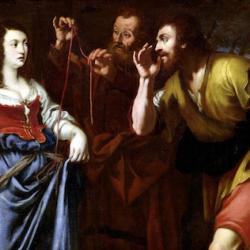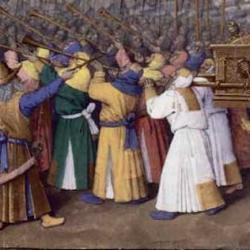The structural center of the second half of Joshua is Joshua 18:1-7. It seems a pause in the distribution of the land, as Joshua gives instructions to the seven remaining tribes about how they’ll receive their inheritance.
The reference to Yahweh’s tent of meeting in verse 1 is so light that we may miss it. But it’s crucial not only to Joshua 18 but to the whole of the book.
The tabernacle is mentioned only a handful of times in Joshua (‘ohel, “tent,” in 18:1; 19:51; mishkan, “tabernacle,” is used in 22:19, 29). But it’s essential to the conquest. The conquest was a military action; but it was, more fundamentally, a liturgical action.
Not only does Israel sometimes fight with liturgical weapons (trumpets, e.g.) but the goal of the entire operation has to do with worship. Israel kills Canaanites and destroys some cities, but the real targets are the shrines, images, idols, and sacred groves where Canaanites worship. The conquest aims to purge the land of idols.
So that: Yahweh can be established as the sole king of His land, so that Israel might devote themselves in exclusive worship of the God who brought them from Egypt. Joshua 18:1 describes the positive import of the conquest – setting up Yahweh’s tent in the land.
Once we see that, we can see the strong continuity between the conquest and the church’s mission. Like Israel, the church exists to drive idolatry from the land (now = the earth), and to set up the temple of the Lord, the temple of the Spirit that the church is.












